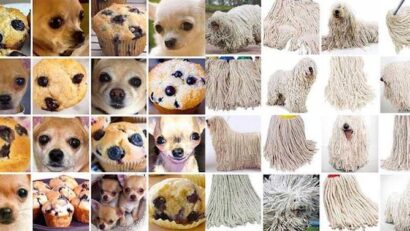
Avoiding your neighbor because of how they voted? Democracy needs to you talk to them instead
Are you angry about politics right now? Seething? You’re not alone. According to the Mood of the Nation Poll by researchers at Penn State, 9 in 10 Americans can name a recent news event or something about American politics that made them angry.
Political scientists Steven Webster, Elizabeth Connors and I have investigated what happens to people’s social networks – their friends, family and neighbors – when partisan anger takes over. For example, suppose your neighbor is a member of the opposite political party. You’ve always watered their plants when they go on vacation. Given the news these days and how angry you’re feeling, what will you say when they ask for help during their next trip?
We found that when someone is angry with the opposite party, they avoid people with those views. That can include not assisting neighbors with various tasks, avoiding social gatherings attended by people from the other side, and refusing to date people who vote differently. It means being disappointed if your son or daughter marries a supporter of the opposing party, and even severing close friendships or distancing yourself from close relatives.
We see that political anger disrupts ordinary life – coffee with a friend – as well as more major life decisions. Political anger breaks our social networks.
People rely on their relationships to understand our world – and to vote. The more we isolate ourselves from people who see things differently, the easier it is to misunderstand them, pushing us to separate even more.
Stereotype vs. reality
During the Obama administration, my collaborators and I asked a nationally representative sample of voters to describe their stereotypes about the opposite party. Our questions were intended to tap into perceptions of the other side’s lifestyles and cultural values, in addition to policy attitudes.
First, we wanted to establish each side’s actual views. Our 2012-2016 study asked around 1,300 Americans whether they agreed with statements that are often associated with one party or the other – including creationism, guns, taxes and eco-friendliness.
For example, 42.5% of all Republicans we surveyed agreed with the statement that “this country would be safer if every law-abiding citizen possessed a firearm,” versus 25.1% of independents and 14.2% of Democrats. Meanwhile, 38.7% of Democrats agreed that “this country would be better if every citizen drove an electric car,” compared with 22% of independents and 11.4% of Republicans.
Which party do you associate with these cars?
3alexd/iStock via Getty Images Plus
Two months later, we went back to the same voters and asked them a different question: What percentage of Democrats and Republicans did they think would agree with these statements?
We saw dramatic evidence of stereotypes. For example, only 19% of Democrats agreed that all Americans should pay more taxes, but more than 80% of Republicans believed the percentage to be higher. The same pattern occurred with electric cars and firearms. Just over 42% of Republicans agreed that all “law-abiding” citizens should have a gun, but the typical Democrat believed the percentage to be 60%-80%.
Americans do not understand each other across the red-blue divide. Importantly, respondents with more ideologically extreme views themselves had less accurate perceptions of the other party.
Avoiding the Joneses
The more extreme our beliefs become, the harder it will be to understand our neighbors.
Suppose you are a Republican. You learn that your Democratic neighbors believe that everyone should drive an electric car, marijuana should be legal in all states, and universal health care should be available to all citizens. Or suppose you are a Democrat, and you learn that your Republican neighbors believe that humans and dinosaurs walked the Earth at the same time, that elementary school students should be required to recite the Pledge of Allegiance every morning, and that a fence should be built between the U.S. and Mexico.
Would you want to be friends?
These hypothetical neighbors have stereotypical beliefs – and most Americans say they do not want those neighbors in their social networks. Specifically, according to our 2023 study, they reported not wanting to become friends, not having this neighbor over for a family meal, and not feeling comfortable allowing their children to play with the neighbor’s kids, among other activities.
Stereotypes don’t just drive individual people and families apart; they make neighborhoods less cohesive. We ascribe stereotypical beliefs to people who are members of the opposite party – and then we react to these stereotypes, not to our neighbors themselves.
You’re still neighbors, no matter how you vote.
monkeybusinessimages/iStock via Getty Images Plus
Social citizens
Cutting off those in-person relationships isn’t just a problem for safety and friendliness around the block. It’s a problem for democracy because Americans need relationships with people whose politics are different than their own.
A majority of Americans have social circles that are politically homogeneous. Even in 2020, 53% of Republicans said that their network was exclusively composed of Donald Trump supporters, and 55% of Democrats said that their network was exclusively composed of Joe Biden supporters.
In her book “Through the Grapevine,” political scientist Taylor Carlson documents that approximately 1 in 3 American voters mostly learn about politics from socially transmitted information: news they get from talking with friends or scrolling on social media. Relying on these sources is particularly problematic in social networks that are homogeneous, as exposure to information from someone in your own party can lead people to have more extreme positions. Carlson’s work highlights that voters who rely on friends to shape their views rely upon a resource that is heavily biased.
In my own book “The Social Citizen,” I investigated the influence peers have on political decisions, from voting and donating to identifying with a political party. For example, if a neighbor knocks on your door and asks you to turn out to vote, you are 4%-11% more likely to go cast a ballot than if a stranger knocked on your door.
Democracy in action
What can we do to remedy the fractures? We need to understand each other.
The U.S. has a long tradition of political dialogue. Indeed, after a brutal election tested their friendship, John Adams and Thomas Jefferson did not exchange letters for 11 years. But the pair resumed their correspondence in 1812 with Adams’ statement – later echoed by Jefferson – “You and I, ought not to die, before We have explained ourselves to each other.”
What Adams and Jefferson understood in the 19th century still applies to the divisions in American society today: Reconciliation requires understanding. These conversations are frequently painful and hard; data scientists have noted that Thanksgiving dinners with guests who cross party lines are frequently shorter. But as my own research shows, we are most able to persuade people with whom we have the closest ties.
Democracy challenges us to participate in more ways than simply by voting. It challenges everyone to understand those around us and seek what is in the collective best interest.
And we have the most influence over people in our social networks. So that friend you’re really angry with about their politics? It’s time to give them a call and have a conversation. Läs mer…







